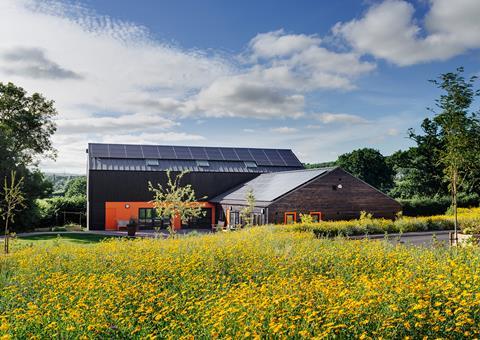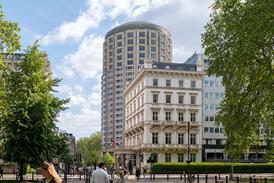The struggle to get a village hall built in Devon shows how the system is stacked against rural areas, writes Ben Flatman

Rural England is not the most fashionable context for architectural practice. Planning laws have often made it hard to build in the countryside. Most architecture schools and many young architects tend to be focused on cities, and among those who strive to deliver socially impactful architecture there’s often an assumption that the “real” architectural problems are purely urban.
But rural communities are facing their own distinct challenges as their economies struggle to create well-paid jobs. In areas of seeming affluence, local people are increasingly marginalised, often priced out by second home owners and cash-rich professionals downsizing from the cities. While house prices continue to rise, the underlying economics are often less rosy. Much of rural England underperforms EU averages for wages and economic opportunity.
Disempowered by what many believe is the developed world’s most centralised system of government and facing the increasingly harsh cuts imposed by austerity, England’s villages and agricultural communities often struggle to find the levers by which to manage their own destinies. While central government, rightly, pushes the agenda of more devolved powers to city regions, there’s a risk that the outlying and in-between parts of the country are increasingly left behind.
A new village hall in south Devon illustrates both the challenges of getting things built in the age of austerity, but also the vital role that community-led projects can play in terms of helping to improve the quality of life in rural areas. Broadhempston is a small, relatively remote village, which lacked sports facilities and the type of shared community space which many places take for granted. The parish council had bought a piece of land with the idea of developing a new hall, but struggled to find funding.

With the vast majority of English taxation collected centrally and spending allocated directly by Westminster, local government has very little leeway to raise revenue or decide how money is spent. England’s 9,000 parish councils, which sit at the bottom of the governmental structure, receive a pitiful £1 billion in funding between them annually. As a result they can often seem like nothing more than eviscerated talking shops. For Broadhempston, this meant the village was forced to go begging to the National Lottery in order to fund what would be widely seen as basic community facilities in much of continental Europe.
According to Peter Sheridan, a local resident who effectively project managed the hall, only 5% of applicants to the Lottery’s Reaching Communities buildings fund are successful, underlining the near impossibility of getting funding for such projects in the current context. Even when Broadhempston was offered £500,000 towards its village hall by the National Lottery, it was soon found that this was woefully inadequate. The money had to be spent within a set period, so with the clock ticking, a race began to cost engineer a project that could be delivered on time to such a tight budget.
Given the difficulties of raising adequate funding for community building projects in rural England, even with Lottery money, it’s testimony to the commitment of Peter Sheridan and the village hall trust, as well as the perseverance of local practice van Ellen and Sheryn, that the project ever saw the light of day. The initial planning approval, for an ambitious sedum-roofed structure had to be scrapped, and replaced by a much more rugged, stripped-back design. Ultimately, the project was only deliverable through a design-and-build contract.
Like any committed architect Eilir Sheryn talks enthusiastically of the site, and of how he and his team sought to “create something different and unique for the community.” He bemoans the loss of the original design, but is proud to have helped deliver a quality new facility for Broadhempston, despite the odds being stacked against the project from the start. He talks of the compromises made on finishes and materials that are familiar to many architects on public projects. As Peter Sheridan has noted, even the National Lottery acknowledges that many of the projects it funds find the budgets allocated inadequate to deliver the quality of architecture that communities want to aspire to. As so often, the architecture was squeezed to the fringes of this project.
Since completion of the Broadhempston Village Hall the National Lottery has closed the Reaching Communities buildings fund, although an alternative application process still offers capital support of up to £100,000. Given the challenges that Peter Sheridan and Eilir Sheryn faced in delivering their project, with significantly more funding, it’s difficult to imagine what of real architectural value can realistically be achieved with such minuscule budgets.
A troubled village hall project may seem insignificant, given the many other challenges facing rural communities. But it highlights the problems faced by so many communities which are held at arm’s length by central government and its often London-based funding agencies. Without delegated power and resources, rural communities struggle to offer basic facilities, let alone address more profound issues relating to housing and economic development. England’s cities are finally moving towards more devolved models of government and funding. It’s time the countryside was allowed to follow the same path.
















No comments yet